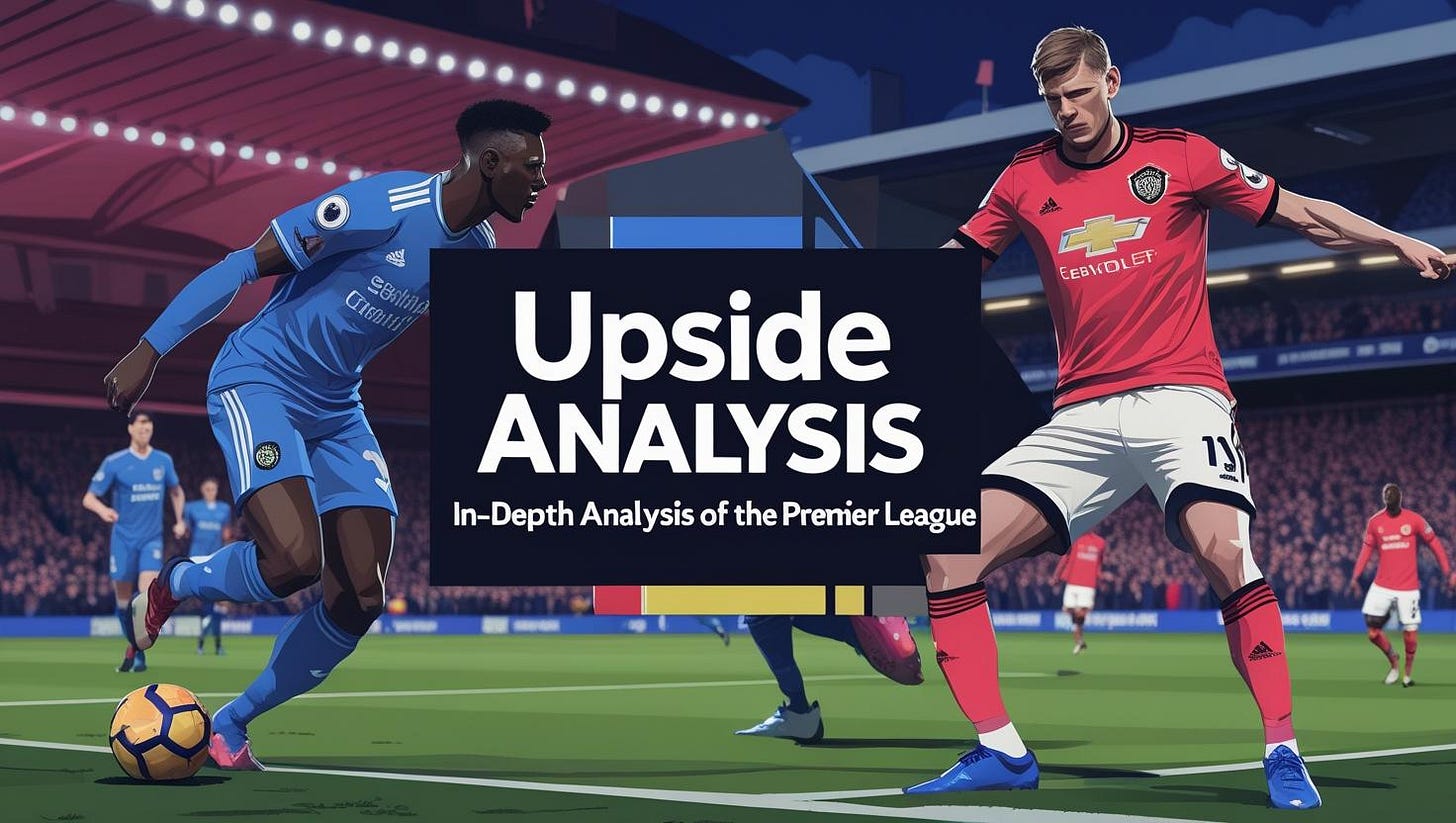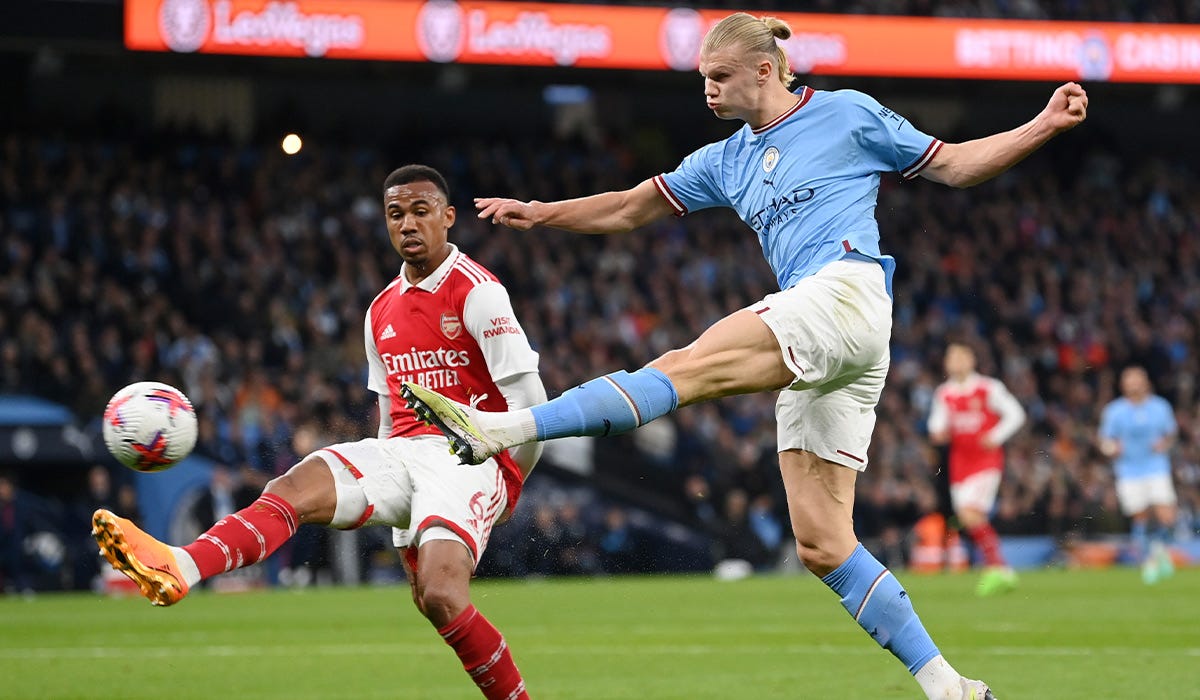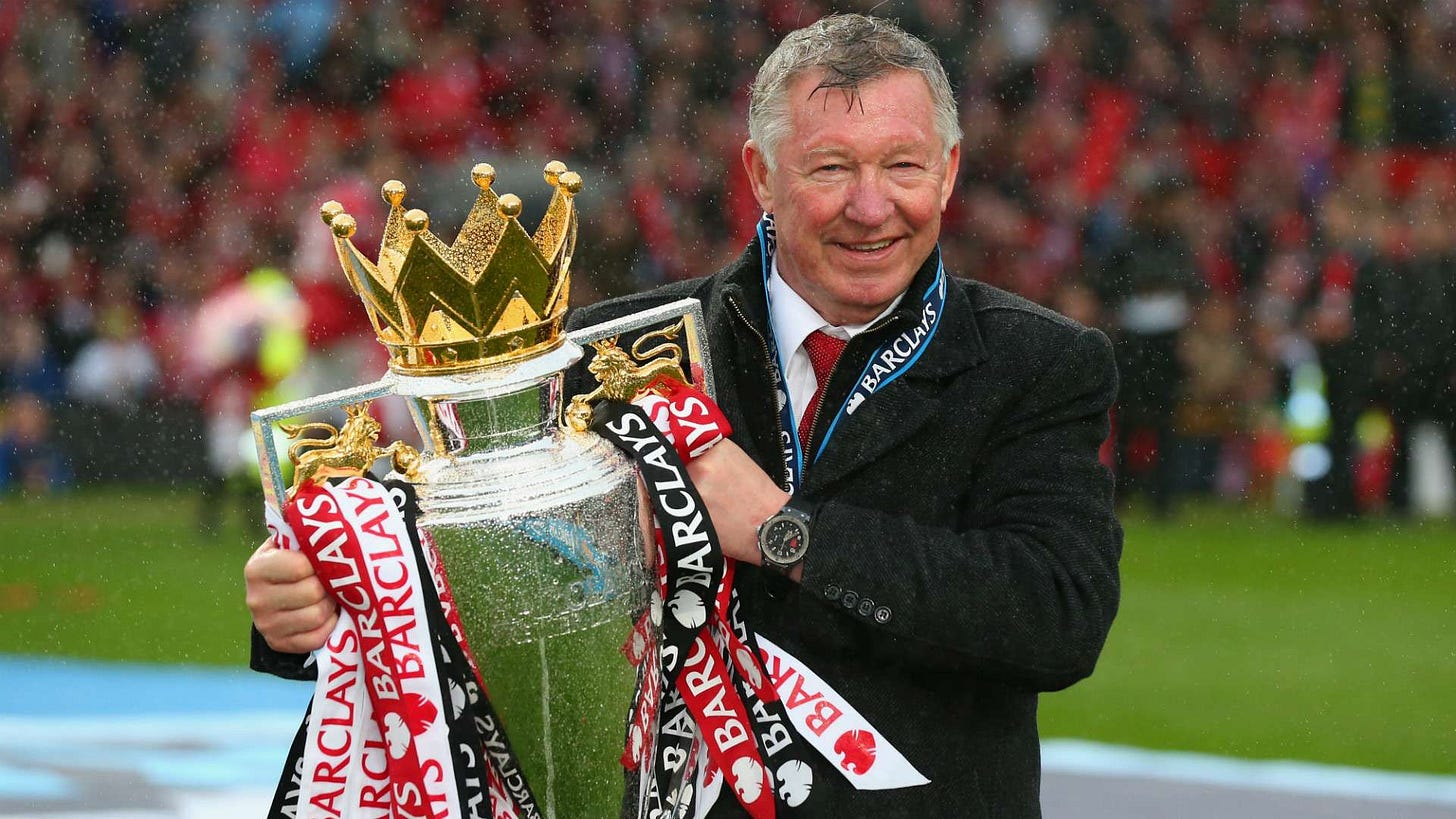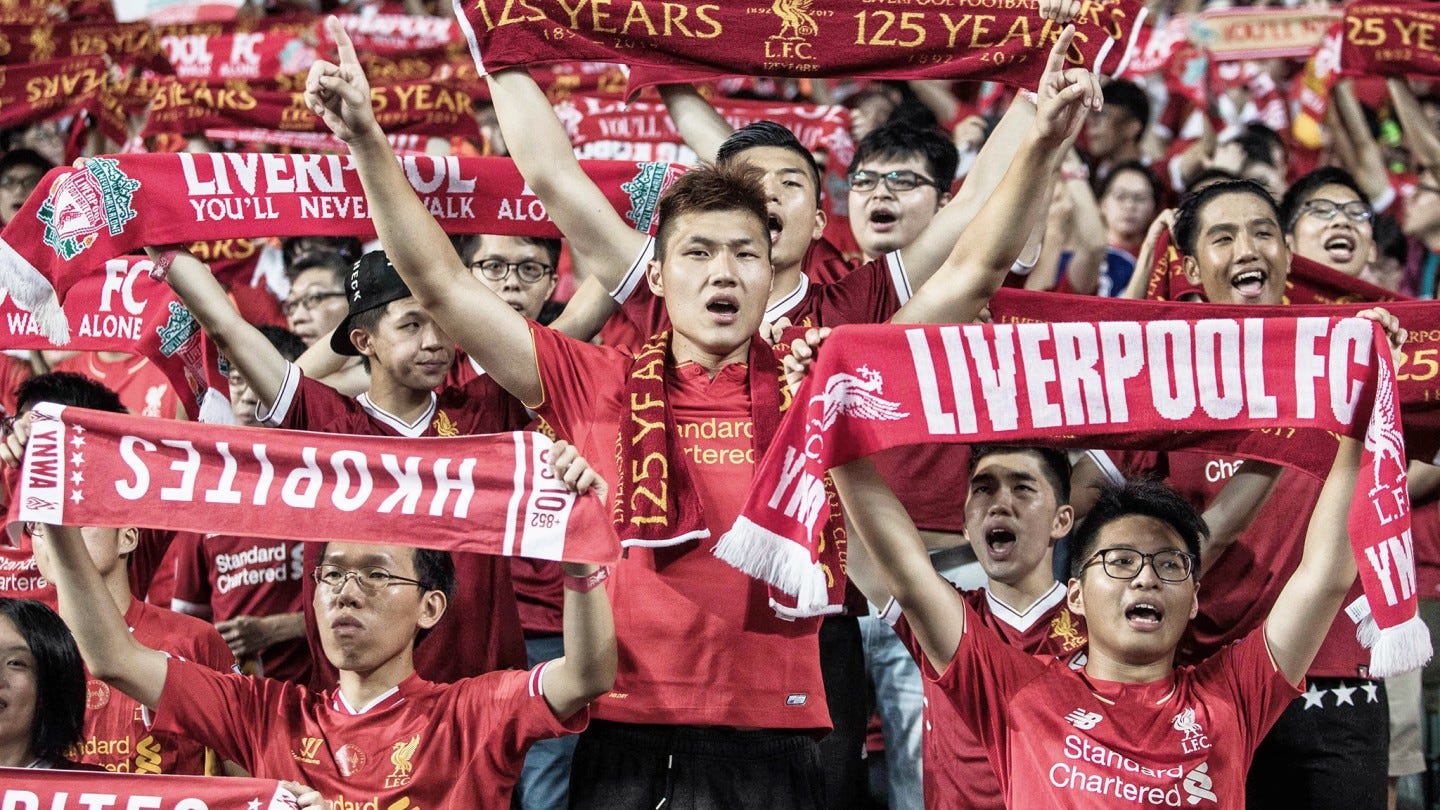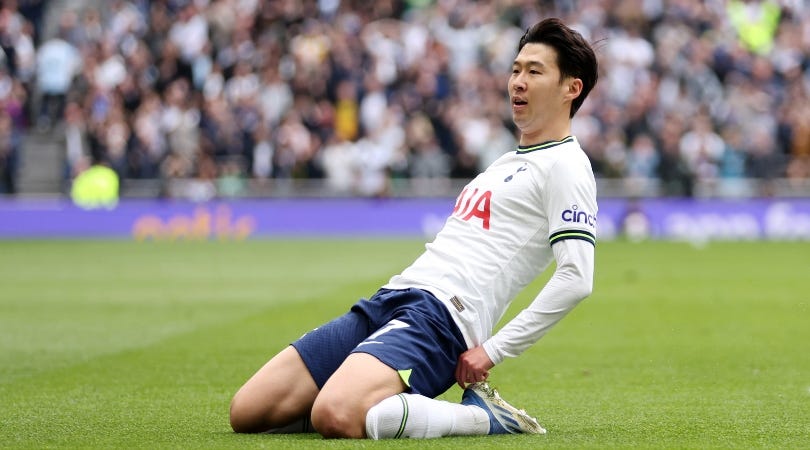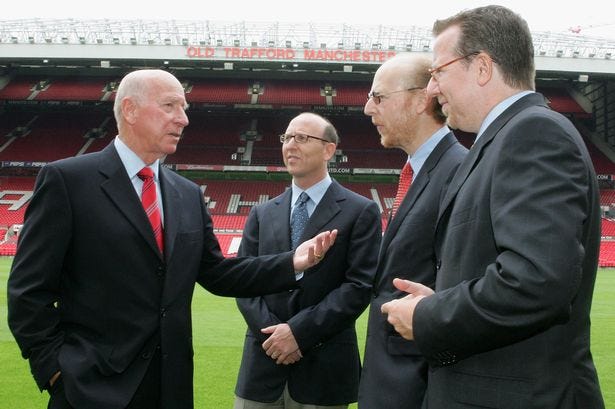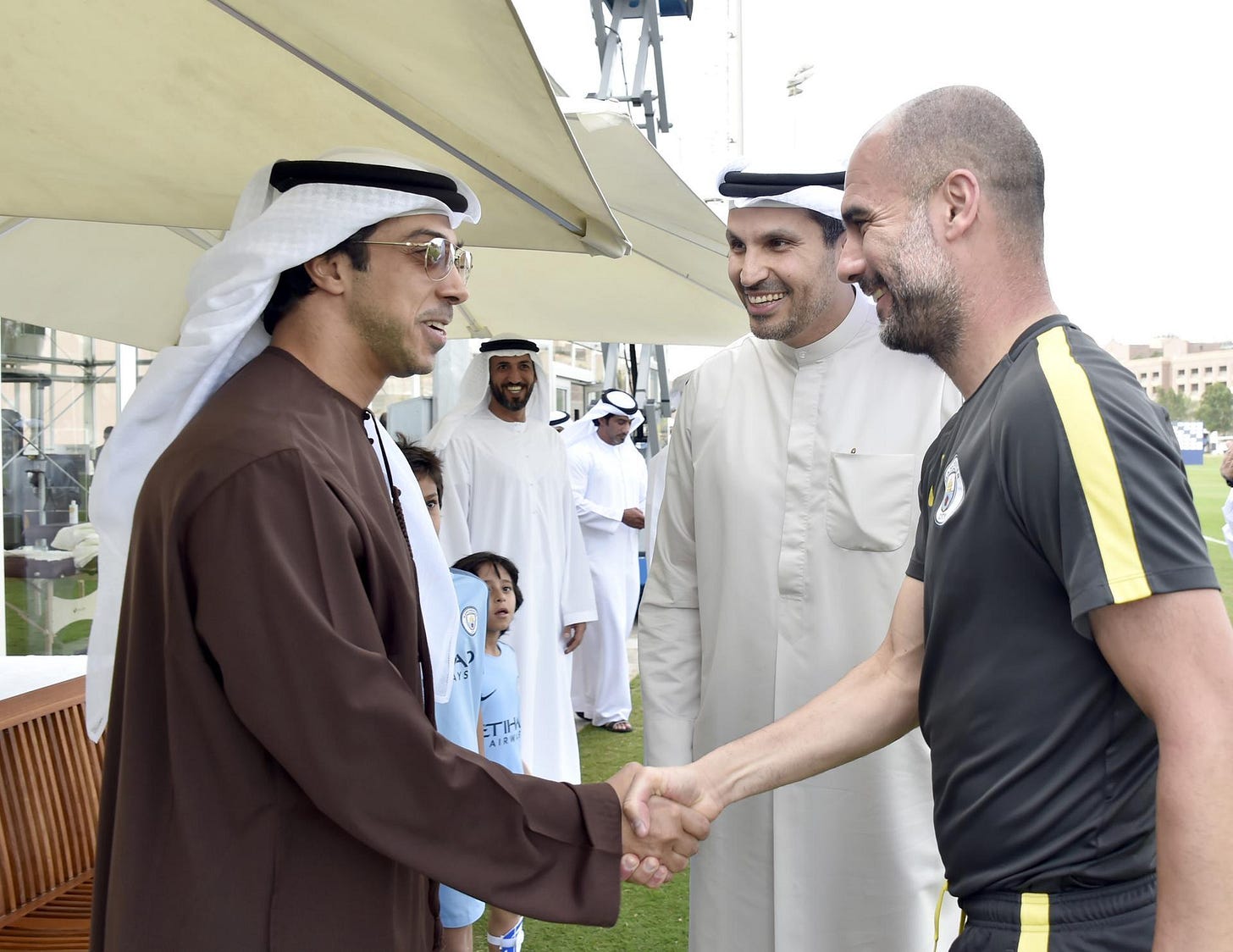⚽ Upside Analysis: The Premier League: History, Economics, Tech Used, Foreign Ownership, Future outlook
The English Premier League (EPL) is the most-watched and commercially successful domestic football league in the world. Established in 1992, the league has become a global brand synonymous with fast-paced matches, iconic rivalries, world-class talent, and relentless drama. With a cumulative global audience of over 3.2 billion annually, the EPL has redefined sports entertainment and global fan engagement. Beyond the pitch, it is a cultural phenomenon, an economic juggernaut, and an ever-evolving laboratory for sporting innovation and technology.
The Premier League's allure stems from a combination of its rich football heritage, elite competitiveness, and business acumen. It continues to captivate fans in more than 200 territories, with matches broadcast in over 900 million homes, making it not just a football league—but a global entertainment product.
History of the Premier League
The Premier League’s formation in 1992 marked a pivotal shift in English football. Following years of declining stadium attendance, hooliganism, and poor financial management in the 1980s, top clubs saw the opportunity to take control of commercial rights by forming a new league structure separate from the Football League.
Key Historical Milestones:
1992: 22 clubs broke away from the Football League to form the FA Premier League, backed by a groundbreaking Sky Sports television deal worth £304 million over five years.
1995: The league reduced its teams from 22 to 20 to align with UEFA guidelines and improve fixture scheduling.
1990s: Manchester United, led by Sir Alex Ferguson, emerged as the dominant force, laying the foundation for global EPL brand recognition.
Picture: Sir Alex Ferguson
2000s: The "Big Four" era—Manchester United, Arsenal, Chelsea, and Liverpool—saw English clubs dominate both domestically and in the UEFA Champions League.
2008 onwards: The financial landscape changed drastically with foreign investments, such as Sheikh Mansour’s purchase of Manchester City and Roman Abramovich’s investment in Chelsea.
Pictures: Roman Abramovich (Left), Sheikh Mansour (Right)
2010s: Emergence of Leicester City’s miraculous 2015–16 title win, increased broadcasting revenues, and digital engagement fueled unprecedented global growth.
Picture: Leicester City’s 2015–16 title win
Today, the Premier League reflects both the traditions of English football and the commercial evolution of modern sports.
Economics of the Premier League
The Premier League's economic model is a blueprint for sports commercialization worldwide. Its financial ecosystem integrates broadcasting, sponsorship, matchday, and digital revenues to create the wealthiest domestic football competition globally.
Broadcasting Revenue:
The 2022–2025 media rights cycle is valued at over £10 billion, with £5.3 billion coming from international rights—surpassing domestic revenue for the first time.
Major broadcasters include Sky Sports, TNT Sports, Amazon Prime (UK), and global giants like NBC (USA), Star Sports (India), and iQIYI Sports (China).
Commercial Partnerships:
Clubs generate hundreds of millions annually through shirt sponsors (e.g., Emirates, Standard Chartered, TeamViewer), kit deals (Nike, Adidas, Puma), and stadium naming rights.
The Premier League itself signs league-wide deals with partners like EA Sports (title sponsor), Barclays, Budweiser, and Coca-Cola.
Matchday and Hospitality:
Clubs like Manchester United and Arsenal generate £100M–£120M annually from ticket sales, merchandise, VIP boxes, and tours.
Average ticket prices are among the highest in Europe, but consistently sold-out stadiums reflect the deep-rooted local support.
Player Transfer Market:
EPL clubs spent a record £2.36 billion in the 2023 summer transfer window, illustrating their financial clout.
England consistently outspends other leagues, accounting for over 35% of global football transfers annually.
Broader Economic Impact:
A 2021 Deloitte report estimated the EPL contributed £7.6 billion to the UK GDP and supported 94,000 full-time jobs.
It also paid over £3.6 billion in taxes, underlining its significance as a national economic engine.
Growing Adoption of Asian Fans for the Premier League
Asia has emerged as one of the Premier League's most important strategic markets, home to billions of football fans with rising disposable incomes and digital engagement.
Key Growth Regions:
China: Over 300 million fans, with a strong affinity for big clubs like Manchester United and Liverpool. Partnerships with local streaming platforms like iQIYI and Weibo amplify reach.
India: A rapidly growing fanbase, with the Premier League actively supporting grassroots initiatives like the Premier Skills Programme and broadcasting on Disney+ Hotstar and Star Sports.
Southeast Asia: Countries like Thailand, Indonesia, and Malaysia boast some of the highest per-capita EPL fan engagement. Liverpool and Manchester United are especially popular.
Growth Drivers:
Asian Footballers: Stars like Son Heung-min (South Korea) and Takehiro Tomiyasu (Japan) have fostered national pride and localized fan growth.
Picture: Son Heung-min (South Korea)
Preseason Tours: Clubs routinely tour Asia for friendlies, fan events, and sponsorship activations.
Localization Strategy: Teams develop region-specific digital content in local languages, and some have dedicated social media teams based in Asia.
Sponsorship: Asian brands like AIA, Yokohama, and King Power have invested in EPL clubs to boost their global image.
The Premier League’s Asia strategy reflects a long-term commitment to building emotional fan ties and commercial partnerships.
Technologies Used in the Premier League
Technology plays a pivotal role in the Premier League's on-field performance, off-field strategy, injury prevention, player well-being, and fan engagement. Clubs increasingly rely on sophisticated Athlete Management Systems (AMS) and integrated technologies to gain a competitive edge and optimize every aspect of their operations.
Performance and Injury Prevention
Premier League clubs invest heavily in technologies that monitor training loads, manage fatigue, and reduce injury risk:
Orreco: Specializes in combining biomarker analysis, machine learning, and sports science to optimize player recovery and health. Their RedZone platform helps EPL clubs monitor immune health, fatigue, and hormonal readiness, especially during congested match periods.
Kitman Labs: Offers an advanced athlete management ecosystem that integrates medical records, training load, GPS data, and recovery metrics into a centralized intelligence platform. Clubs use Kitman to make data-informed decisions about return-to-play timelines, load management, and risk profiling.
ActionApps: Offers custom-built apps for EPL medical and performance departments, integrating data feeds from wearables, subjective surveys, and match stats. Clubs use it for rehab tracking, nutrition planning, and real-time health alerts.
STATSports / Catapult / KINEXON: These wearables track distance covered, high-speed efforts, acceleration, and heart rate variability, helping coaches balance training intensity with player readiness.
NordBord & ForceFrame (Vald Performance): Used to test hamstring strength and joint stability—crucial for identifying injury risks and individualizing rehab.
Communication, Scheduling, and Team Coordination
Teamworks: Widely used for player communication, scheduling, wellness tracking, and content sharing. Teamworks enables seamless coordination among players, coaches, and staff. EPL teams use it to manage everything from logistics to educational content, especially for multilingual, international rosters.
Scouting and Tactical Analysis
Hudl / Wyscout / StatsBomb: These tools offer deep video analysis and data-driven insights for player recruitment, opposition analysis, and tactical planning.
SciSports: Uses machine learning and event data to assess player impact (e.g., VAEP metrics), enabling smarter scouting and real-time performance grading.
Zone14: Provides spatial analysis and team behavior patterns through AI-powered tracking of player positioning and ball movement, helping EPL clubs refine formations and positional play.
Health, Nutrition & Recovery
Orreco’s FitrWoman: Used by clubs like Chelsea Women to optimize training for female players based on menstrual cycle data, reducing injury risk and improving performance.
Cryotherapy, Cold Plunge, and Contrast Therapy Units: Widely used across EPL facilities for muscle recovery post-match.
Sleep Monitoring: Clubs partner with tech providers or use wearables like Whoop, Oura, or Fatigue Science to monitor sleep quality, HRV, and circadian rhythms.
Gut Health & Nutritional Testing: Some clubs collaborate with biotech firms for microbiome profiling, blood biomarker testing, and individualized nutrition strategies to enhance player well-being. Other clubs use Hexis’ nutritional platform.
Fan Experience and Broadcast Innovations
AR & VR Fan Engagement: Clubs like Manchester City and Arsenal are experimenting with augmented reality matchday experiences and VR walkthroughs of stadiums.
Digital Collectibles / NFTs: Platforms like Sorare enable clubs to issue licensed digital player cards tied to fantasy games, fostering deeper fan interaction.
AI-Powered Broadcasts: The Premier League integrates real-time stats overlays, player tracking, and enhanced visuals to enrich global broadcasts across Sky Sports, Amazon Prime, and NBC.
Emergence of Foreign Ownership in the Premier League
One of the most transformative developments in the modern Premier League era has been the influx of foreign ownership. Since the early 2000s, the league has evolved from a largely domestically-owned set of clubs into a global investment arena, attracting billionaires, sovereign wealth funds, private equity firms, and multinational conglomerates. Today, over two-thirds of Premier League clubs are majority-owned by non-British investors.
Historical Context
The trend began in earnest with Roman Abramovich's purchase of Chelsea FC in 2003. His arrival marked the start of a new era—ushering in vast financial injections, high-profile transfers, and a new model of aggressive club investment.
Picture: Roman Abramovich
This was followed by the Glazer family’s acquisition of Manchester United in 2005, which sparked controversy among fans but demonstrated how leveraged buyouts could enter football.
Picture: Glazer family
The model matured with Abu Dhabi United Group’s takeover of Manchester City in 2008, leading to unprecedented spending and a redefinition of what club success could look like.
Current Landscape of Foreign Ownership
As of 2025, the Premier League features a wide range of foreign owners:
Source: Upside Global, July 2025
Motivations Behind Foreign Investment
Global Brand Value: EPL clubs provide global visibility, commercial brand reach, and prestige, especially to owners from emerging economies or those seeking soft power.
Asset Appreciation: Clubs have become valuable investment assets, with valuations soaring due to media rights growth and global fandom.
Strategic City Assets: Owning a club offers real estate opportunities, hospitality integration, and political leverage in key UK cities.
Portfolio Synergies: Many owners (e.g., FSG, Boehly, PIF) pursue multi-club ownership models, integrating data, player development, and commercial operations across global networks.
Impacts on the League
Positive Effects:
Increased Investment: Clubs benefit from infrastructure upgrades (training grounds, stadiums), top-tier players, and improved staffing.
Globalization: Owners often help clubs expand their fan bases abroad (e.g., preseason tours in the US, Asia, Middle East).
Professionalization: Many foreign owners bring business acumen, innovation, and better governance practices.
Concerns and Criticisms:
Fan Alienation: Several foreign owners have clashed with local fan expectations, especially when perceived as treating clubs purely as assets (e.g., Super League backlash).
Sportswashing: Some owners—particularly sovereign wealth funds—are accused of using clubs to improve global reputations amid political controversies.
Regulatory Loopholes: The need for stricter financial and ethical governance has led to calls for an independent football regulator, especially after the Saudi-led Newcastle takeover.
Future Trends in Ownership
Private Equity Influx: Firms like Clearlake Capital and Silver Lake have taken stakes in EPL clubs and related media assets, signaling a shift toward financialized ownership.
More Middle Eastern Investment: Following PIF's entry via Newcastle, Qatar and UAE entities are exploring deeper investments in English clubs.
Fan Ownership Movements: The backlash to purely profit-driven ownership has revived interest in hybrid models that offer supporters more control (e.g., "Golden Share" proposals).
Government Oversight: The UK government’s plan for an Independent Regulator for English Football (IREF) may reshape how takeovers are approved and how clubs are managed financially and ethically.
Foreign ownership has reshaped the Premier League’s identity, powering its financial dominance and accelerating its global reach. While it brings significant capital and innovation, it also introduces complex challenges around governance, ethics, fan representation, and national interest. The coming years will likely see tighter regulations, more institutional investors, and an ongoing tension between local values and global ambitions.
Future Outlook of the Premier League
The Premier League’s global dominance is likely to continue, but the future will be shaped by how it navigates innovation, regulation, and global expansion.
Growth Opportunities:
Direct-to-Consumer Platforms: The EPL is exploring its own streaming service (“Premflix”), which could disintermediate broadcasters and increase profitability.
Further Internationalization: Clubs will deepen investments in North America, Africa, and Asia through academies, content studios, and retail outlets.
Women’s Football: The Women’s Super League (WSL) is growing rapidly, with support from EPL clubs and the potential to mirror the men's league’s success.
Sustainability & ESG: Pressure to adopt greener stadium operations, lower carbon footprints, and ESG-compliant partnerships will rise.
Talent Development: More emphasis will be placed on homegrown player rules and investment in local academies as spending scrutiny intensifies.
Challenges:
Regulatory Oversight: The UK government is introducing an Independent Football Regulator, which will monitor ownership, club finances, and governance practices.
Wealth Gap: Financial disparity between top clubs and the rest could threaten competitiveness and push for salary caps or spending limits.
European Super League (ESL): Though the original attempt failed, future iterations or reforms in European competition structures could disrupt domestic leagues.
Broadcasting Saturation: Shifting viewer habits and streaming fatigue may require the league to reinvent how it monetizes viewership.
The Premier League’s future will be defined by its agility in adapting to evolving fan behaviors, geopolitical dynamics, and regulatory expectations—while preserving its unique brand of football.
Conclusion
The Premier League is not just a sports competition—it is a global enterprise, cultural export, and technological pioneer. With its compelling mix of rich history, elite competition, financial power, and relentless innovation, the league remains the benchmark in global sport.
As the world of football undergoes transformations in broadcasting, fan engagement, player welfare, and financial oversight, the EPL’s leadership will be critical in shaping the next era of the beautiful game. It must strike a balance between global growth and local relevance, tradition and innovation, profit and purpose.
If it does, the Premier League is poised to remain the world’s most exciting and influential football league for decades to come.
You may also like:
⌚⚽ 🏀 Upside Analysis: Sports Leagues' regulation towards wearables (NBA, NFL, MLB, MLS, AFL, Premier League, PGA Tour..) (2nd Edition)
Since 2012, a growing number of sports leagues have started to allow pro teams to use wearable during live games or training in order to track players’ performance data. But not all the leagues are equal in this area. in this analysis we are going to provide an overview of current offline and online rules around the use of wearable data in pro sports.

